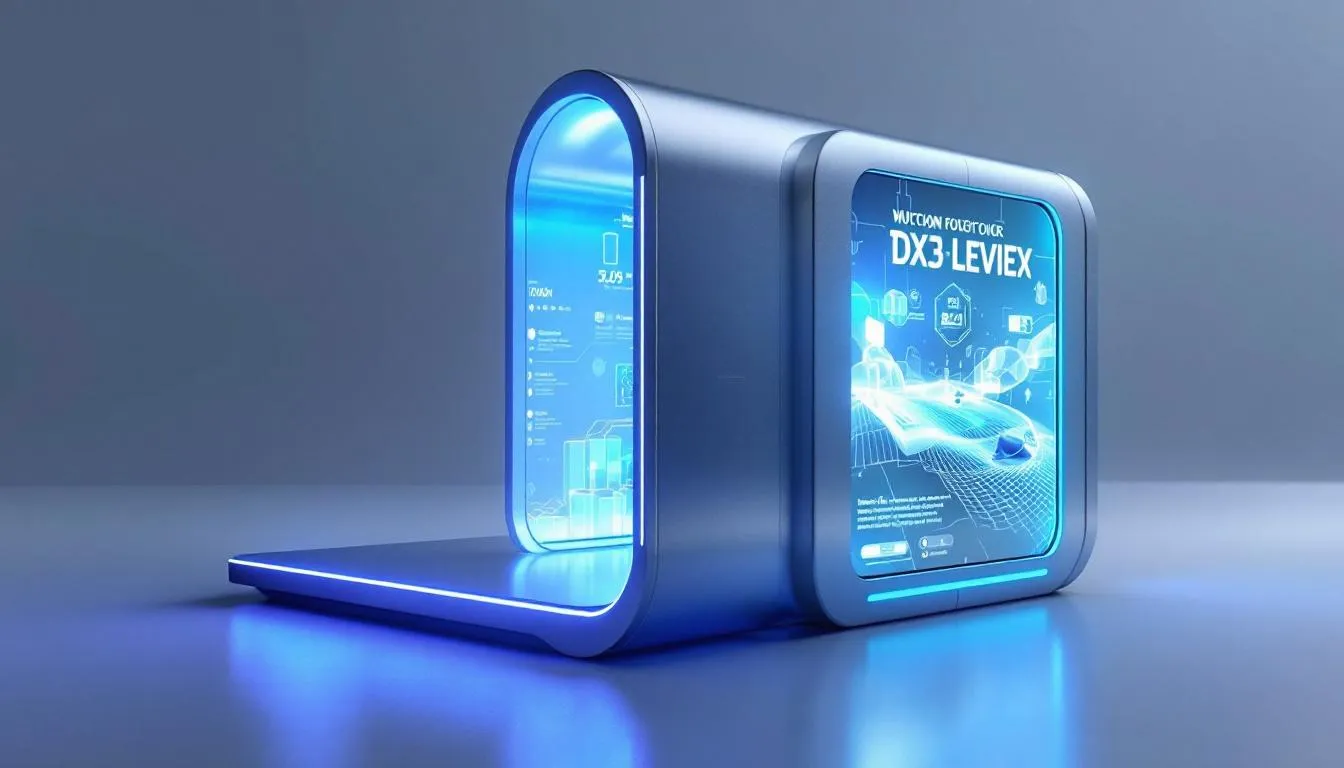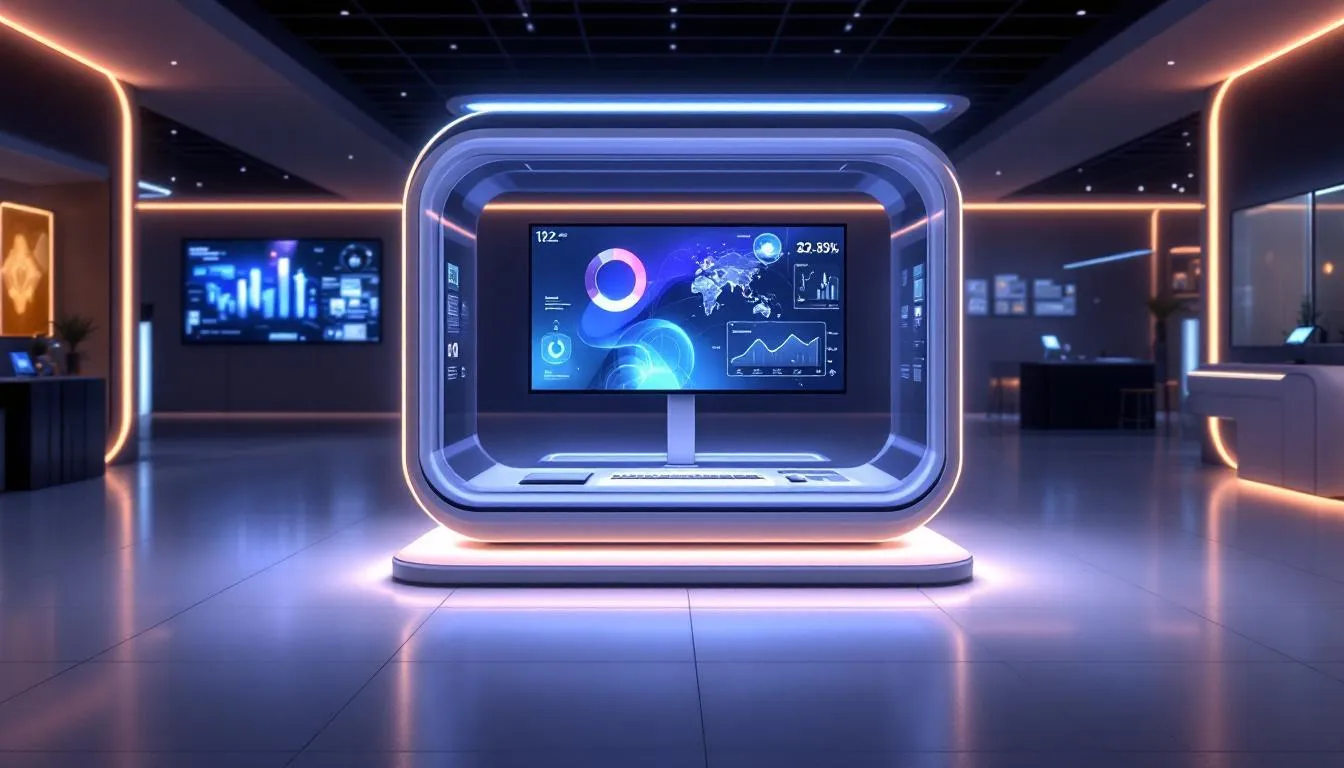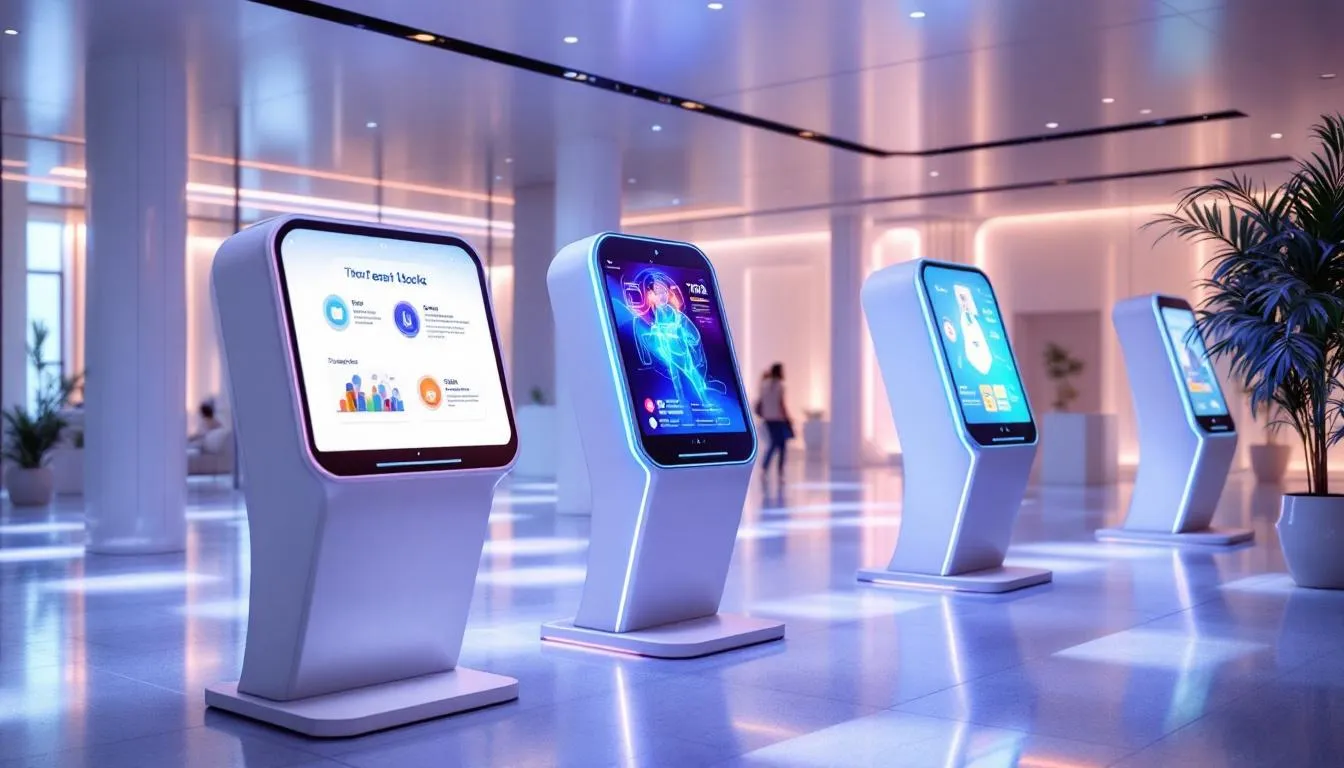Interactive kiosks are self-service machines found in places like airports, malls, and hospitals. They let users access information or services and perform transactions independently. This article will explore their benefits, from improving customer engagement to boosting efficiency in modern venues.
Key Takeaways
- Interactive kiosks enhance customer engagement and operational efficiency, providing self-service capabilities and real-time updates across various venues.
- The customization and scalability of interactive kiosks accommodate diverse business needs while promoting user empowerment and streamlining operations.
- Successful implementation of interactive kiosks relies on user-centered design, seamless integration with existing systems, and continuous maintenance for optimal functionality.
The Role of Interactive Kiosks in Modern Venues
Interactive kiosks have become essential in modern venues, significantly boosting customer engagement and operational efficiency. Envision an airport where you can check flight information, navigate to your gate, and even order food—all independently. These kiosks are not limited to airports; they are commonly found in shopping malls, healthcare facilities, and various other high-traffic locations.
Interactive kiosks offer:
- User-friendly interfaces that let individuals perform tasks on their own.
- A self-service feature that enhances customer experience while reducing staff workload, allowing staff to focus on more complex tasks.
- Real-time updates that ensure data is immediately available to both customers and staff, boosting overall efficiency.
Additionally, interactive kiosks support environmental sustainability by minimizing the need for printed materials. Businesses can personalize offerings based on user data, creating tailored experiences that enhance customer satisfaction—a true game-changer in today’s world where personalization and efficiency are essential.
Key Features of Interactive Kiosks
Interactive kiosks stand out due to their cutting-edge features aimed at providing a seamless and engaging user experience. Often equipped with 10-point touch capability, these kiosks enhance user interaction and offer intuitive interfaces. Users can easily navigate through options like checking inventory or placing orders with touch screen kiosks.
Self-service kiosks are also notable, enabling users to access services independently to assist in streamlining operations and boost customer satisfaction by reducing wait times.
Additionally, interactive kiosks are highly versatile in design, available in various shapes and styles to suit different environments. Advanced software supports these designs, enabling efficient operational management and customization to meet specific business needs.
These features collectively make interactive kiosks a valuable addition to any venue, offering a blend of convenience, efficiency, and added functionality that modern consumers crave, allowing them to connect seamlessly with services.
Wayfinding Kiosks
Wayfinding kiosks are invaluable in large and complex venues, offering easy navigation and reducing the need for staff assistance. Picture yourself at Covent Garden Market, effortlessly finding your way with an interactive kiosk. These kiosks provide turn-by-turn directions and interactive maps, simplifying the process of locating people, offices, and meeting rooms through wayfinding software and wayfinding maps.
In high-traffic location like airports and convention centers, wayfinding kiosks are essential. They manage the flow of people and help visitors navigate complex environments with ease. Their effectiveness is evident in the significant reduction of customer inquiries and improved navigation at major locations.
However, using modern technology in wayfinding solutions is imperative. Outdated kiosks, like those at InfoComm Convention Centre, can lack essential features such as 3D routing and responsive buttons, emphasizing the need for advanced outdoor digital wayfinding systems for optimal performance.
Digital Directory Kiosks
Digital directory kiosks act as interactive information hubs, making it easier to find facilities and events within a venue. Imagine quickly locating stores, viewing promotions, and getting directions in a shopping mall—all through a digital directory kiosk, digital signage, and digital kiosks. These kiosks are convenient for visitors and beneficial for businesses within the venue.
In medical clinics, digital directory kiosks offer quick access to department information, doctor schedules, and other key details. This self-service approach reduces wait times and enhances the overall patient experience. Up-to-date information ensures visitors always have access to the latest details, making their visit more efficient and enjoyable.
Importance of Mobile Integration
Mobile integration with interactive kiosks offers unparalleled convenience and accessibility for users on the go. Accessing services and information from anywhere through your mobile phone enhances user experience by providing a seamless transition between mobile devices and kiosks. Contactless check-in options using qr code, for example, address safety concerns in busy environments.
Mobile integration offers several benefits:
- Personalized navigation based on user preferences and past interactions.
- Customers can pre-check in using their smartphones, reducing kiosk interaction time and wait times.
- Storing necessary customer information in mobile apps streamlines the check-in process and reduces input errors.
The combination of mobile apps and kiosks supports a seamless user experience, making the transition between devices smoother and more efficient. Integration with other corporate systems ensures seamless services and enhances customer satisfaction.
Enhancing Trade Show Experiences with Interactive Kiosks

Trade shows are bustling events where real-time information and efficient navigation are crucial. Implementing intelligent wayfinding kiosks can significantly improve visitor experience by providing searchable exhibitor directories and interactive maps. Imagine attending a trade show with all the information you need at your fingertips, from exhibitor locations to scheduled events, including trade show displays.
Interactive kiosks keep visitors informed and engaged with ongoing activities through real-time content updates. These updates ensure visitors do not miss special promotions and important announcements. Using augmented and virtual reality technologies in kiosks creates immersive experiences that captivate visitors and boost engagement.
Moreover, these kiosks help businesses boost sales by providing convenient access to products and services. Exhibitors can efficiently communicate special promotions and updates, maintaining visitor interest and driving sales. By improving digital navigation tools, trade show displays organizers can increase exhibitor visibility, reduce staffing needs, and enhance overall visitor satisfaction.
Customization and Scalability of Interactive Kiosks

The true power of interactive kiosks lies in their customization and scalability, allowing businesses to tailor solutions to their specific needs. Whether you need a wayfinding kiosk for a large convention center or a digital directory for a shopping mall, these kiosks can be customized to meet operational requirements. Customization ensures kiosks are functional and align with your brand and customer expectations.
Scalability is another crucial aspect, allowing interactive kiosks to handle increased user demand without compromising performance. This is particularly important in high-traffic environments where managing large volumes of users efficiently can make a significant difference.
The trend towards user empowerment and automation in commercial and civic environments highlights the importance of scalable and customizable kiosk solutions.
Case Studies: Successful Implementation of Interactive Kiosks

Real-world examples of successful kiosk implementations offer valuable insights into their impact. At InfoComm 2025, advanced data analytics in interactive kiosks allowed businesses to gain insights into visitor preferences and optimize services accordingly. This data-driven approach helps businesses understand customer behavior and tailor their offerings to meet specific needs.
For instance, analytics from kiosks at a large shopping mall revealed peak visitation times and popular stores, enabling the mall to monitor its promotional strategies and produce improvements in customer service for the media company and the team displayed in life during the event.
Another example is a healthcare facility that implemented digital directory kiosks to streamline patient check-ins and reduce wait times in hospitals, significantly improving communication and the patient experience.
These case studies highlight the versatility and effectiveness of interactive kiosks in various environments, demonstrating their ability to enhance customer engagement and operational efficiency.
Best Practices for Implementing Interactive Kiosks
Implementing interactive kiosks successfully requires a focus on user-centered design. Key considerations include:
- Prioritizing the user experience to ensure kiosks are intuitive and easy to use.
- Incorporating advanced features like voice and gesture controls to enhance interactivity and engagement.
- Performing regular updates and maintenance to ensure optimal performance and security.
Integration with existing system like CRM and POS is essential for seamless operations. Remote management systems enable real-time monitoring and updates, integrating minimizing operational downtime and ensuring kiosks always function efficiently.
Following these best practices allows businesses to maximize the benefits of interactive kiosks and offer a superior customer experience.
Summary
Interactive kiosks have revolutionized the way businesses engage with customers, offering a blend of convenience, efficiency, and personalization. From wayfinding kiosks that guide visitors through complex venues to digital directory kiosks that provide real-time information, these solutions are transforming customer experiences across various industries. The integration of mobile technology further enhances the user experience, making services accessible and personalized.
Customization and scalability are key strengths of interactive kiosks, allowing businesses to tailor solutions to their specific needs and handle increased demand efficiently. Real-world case studies demonstrate the positive impact of these kiosks, providing valuable insights into customer behavior and optimizing services accordingly.
As we move forward, the importance of user-centered design, regular updates, and seamless integration with existing systems cannot be overstated. By embracing these best practices, businesses can harness the full potential of interactive kiosks, creating engaging, efficient, and personalized experiences for their customers.
Frequently Asked Questions
What are the main benefits of interactive kiosks?
Interactive kiosks significantly enhance customer engagement and operational efficiency while reducing staff workload. Additionally, they offer personalized experiences and contribute to environmental sustainability by minimizing the need for printed materials.
How do wayfinding kiosks improve visitor experience in large venues?
Wayfinding kiosks significantly enhance visitor experience by offering intuitive navigation through turn-by-turn directions and interactive maps, allowing patrons to effortlessly navigate complex venues. This accessibility helps reduce confusion and improves overall satisfaction during their visit.
Why is mobile integration important for interactive kiosks?
Mobile integration is crucial for interactive kiosks as it enhances convenience and accessibility, enabling users to access services from anywhere and facilitating contactless interactions. This seamless transition between mobile devices and kiosks significantly improves the user experience.
How can interactive kiosks enhance trade show experiences?
Interactive kiosks enhance trade show experiences by offering real-time content updates and searchable exhibitor directories, which significantly boost visitor engagement and exhibitor visibility. They also provide immersive experiences through augmented and virtual reality, streamlining operations by reducing staffing requirements.
What are the best practices for implementing interactive kiosks?
To successfully implement interactive kiosks, prioritize user-centered design and incorporate advanced features such as voice and gesture controls. Additionally, ensure regular updates and integrate kiosks with existing systems like CRM and POS for seamless operations.


